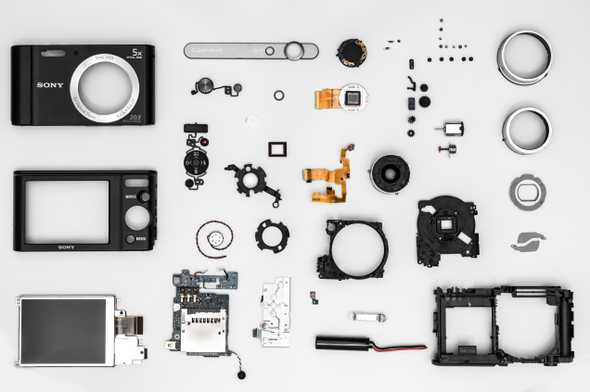Why a style guide
September 14, 2018
When I joined the Customer Experience team to build a new component library, we quickly found a need to publish a style guide. What is it, you ask? I will cover what it is and why we needed one!

Purpose: Why is a style guide being made?
To assist in quickly designing, prototyping and deploying digital products using a baseline of design patterns.
What is a style guide?
The style guide is the living and growing single source of truth for determining the product’s UI and how it is presented. It supports the primary purpose by:
- Removing the guesswork for how certain components look and behave under certain states showcased by our component library.
- Reusing code so styles and components aren’t reinvented.
- Socializing the style guide and its patterns in one place so teams speak the same language and share the same expectations.
- Showing live component examples, allowing the user to interact with various elements to understand look and behavior.
- Showing code snippets alongside components for a contextual understanding of implementation.
- Standardizing guidelines for global styles, such as layout grids, breakpoints, colors, typography and more.
- Document accessibility (a11y) practices and support.

The style guide is NOT:
- Your frontend UI solution or a UI framework (like Bootstrap). It is meant to supplement the developer’s presentation layer and to standardize the designers’ mocks.
- Your component library. The style guide itself is a consumer! The Component Library is a separate package you can import into your project to use.
- A place where you request new components/elements and behavior changes. If you have any suggestions or concerns, please work with the designers first.
- A place for referencing the best-practices for the digital brand.
- Meant to stifle creativity and innovation. Think of it as a baseline that can adapt to our products’ needs over time.
- Meant to teach people how to code. There are other websites and classes with thorough curriculums for learning. The style guide is a reference that describes and - hands you the building blocks for maintaining our UI, but it is not a tool used to help you learn how to code Javascript and HTML/CSS, run build tools, etc.
Target Audience (Who is it for?)
The style guide is meant to be used by anyone involved with the product that needs to design, implement, edit, and review a UI.

This includes, but is not limited to, the following roles:
- Designers: to quickly produce mockups as well as live prototypes (if needed). It should allow non-technical people the ability to simply add a script or stylesheet into the HTML header and consume bits in the markup copied from the code snippet areas.
- Developers: to reference components for building UIs.
- QA: to assert behavior and style of specific components.
- PMs: to use as a reference implementation for testing project/feature UIs and to grab certain elements, if building prototypes.
Who is making and maintaining it?
Overall, a senior designer and the front-end developer (me) will own and maintain the style guide and component library.
Below are the basic iterative steps for how the style guide will be developed and improved:
- The CX team of designers will work with the product team to design mockups for new features, workflows, and/or projects.
- If a new element (or state/behavior) is found, it will be evaluated and determined whether or not changes/additions will make it into the library.
- A frontend developer will implement the new changes and add them to the component library. It will then be reviewed by peers and merged.
- The style guide will be updated reflecting the above.
- Consumers of the component library and style guide will be notified of the update.
Wash and repeat.
Criteria/flow for adding new elements, behavior, or state to the style guide
- Is a similar element/system already in the style guide? If so, can you use that instead?
- If not, then determine the use case(s) for your proposal.
- Meet with style guide designers and determine where to go from there.
Tags:work
